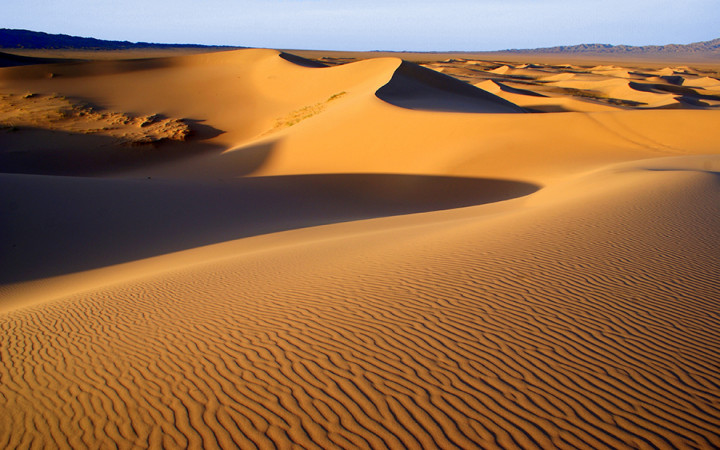The countries in the Asia and the Pacific region represent the second most visited places, after Europe, worldwide. Travel growth spurts in recent years–on average represent 6% yearly.
Therefore, this part of the world outperforms other world regions, which average 5% in increased revenues per year.
Part of the community development in rural areas depends on tourism to thrive, as most people from these regions continue to migrate to the ever-growing urban areas and cities.
As a result, one of the popular draws for travelers of the Asia Pacific (or APAC) region is the Gobi – a partial desert and vast rocky expanse of land in Central Asia. The Mongolian word, gobi, means “waterless place.”
The desert destination covers northern and northwest China and southern Mongolia – a romantic escape for adventurers – remote and unexplored – not so much sandy but rocky. However, to view the desert’s dunes is indeed a spectacular experience for the human eye.
Adventure seekers flock here for good reason – its broad and rugged landscape provides an epic backdrop for outdoor exploration.
In fact, the prototype for the movie character, Indiana Jones, was U.S. Naturalist, Roy Chapman Andrews.
About a century ago, a cavalcade of motor cars and camels crossed the barren steppes of the Gobi, venturing from Peking. The cars and passengers must have been a remarkable sight to see!
Nomadic herders in 1923 witnessed Chapman and his colleagues traveling the desert to make their investigations of ancient history.
What the researchers found, however, was far more profound than human remains. They discovered a nest of dinosaur eggs – the first fossil find of its kind. As a result, the Gobi is considered a treasure trove for anything palaeontological.
In recent times, researchers have also traced a similar path through the famed Gobi, but, instead, relied on equipment and instrumentation used in space travels and research. These technologies include drone mapping devices and thermal and multispectral imaging equipment. The same technology used to explore Mars is also deployed to gather data and identify specimens at fossil sites.
An Adventurer’s Paradise
Besides the desert’s intriguing and ancient discoveries, travelers seek a travel experience that includes dune visits and desert sports (rock climbing, dune riding, and camel trekking) as well as amazing sight-seeing journeys – eco-tours that include desert camping, birdwatching and wildlife spotting activities.
You only have to break down the sights and experiences to understand why travels to the Gobi are on most travelers’ bucket lists.
Massive Sand Dunes
Gobi dunes are striking – some of them reach 1,000 feet high. The Singing Sand Dunes live up to their name – providing a song as you slide over the steep slopes on a sandboard or sled.
The stunning rust-colored sea of sand seems to go on endlessly, an ocean of dunes as far as the eye can see. You can sum up the experience in poet, Donna Ryan’s haiku:
Singing dunes of sand
Gliding over soft snow
Gathering shadows
Rugged Mountains
Jagged mountains and rocky peaks also dominate the landscape, including the Gobi Altai Mountains with elevations up to 14,350 feet. Sharp cliffs, narrow gorges and winding valleys offer opportunities for serious trekking and rock climbing. Ancient petroglyphs and cave paintings along mountain paths provide a glimpse into the region’s history.
Desert Wildlife
While much of the Gobi seems desolate, it’s home to rare desert wildlife like the mysterious snow leopard, the Siberian ibex and argali sheep. The Gobi features many endemic species found nowhere else on Earth.
Over 100 mammal species inhabit the dunes, including the majestic and endangered Bactrian camels and herds of Mongolian gazelles.
Endangered Animals
Bactrian camels number only about 1,000 in the Gobi, and survive both the extremes in heat and cold. They are the only animals who can eat snow in the winter for liquid.
The Mazaalai bear is also critically endangered, with only about 50 currently living in the Gobi desert.
Desert Birds
Birdwatching is also popular, with unusual sandgrouse, desert warblers and Houbara bustards spotted by gimlet-eyed naturalists..
In addition, birdwatchers scan the desert for demoiselle cranes, with their elaborate mating dances, and the vivid blue-and-rust plumage of azure-winged magpies. The trilling call of Mongolian larks, as they soar high above the steppe, makes birdwatching an amazing audio experience.
Gobi Lizards and Reptiles
The Gobi provides refuge for cold-blooded creatures as well. You may catch sight of the colorful Central Asian agama lizard sunning itself on rocks. The desert is also home to several snake species, including the venomous Gobi viper.
Pikas
Pikas, small rabbit-like mammals, inhabit the mountain slopes. They zip in front of your feet, finding refuge in nests beneath rocks instead of the burrows or warrens that their cousins, such as rabbits, may dig.
Opportunities for Exploration and Adventure
Indeed, the Gobi Desert is a paradise for adventure with its massive sand dunes, rugged mountains and unique wildlife. Both explorers and thrill seekers are drawn to this harsh yet striking landscape – seeking challenges and discoveries that can only be found in this wild part of the world.
Only in the Gobi will you see snow or frost icing the sands in the winter – a magical view against a severe topography.
A Rich Cultural History to Discover
The Gobi Desert has been inhabited for thousands of years, leaving behind a rich cultural history for adventure seekers to uncover. Therefore, tourists find much to discover in terms of ancient history and diversity.
Ancient Civilizations
The Gobi has been home to many nomadic tribes and housed several important stops along the Silk Road.
You can still find remnants of ancient civilizations, like the Sogdians, in the ruins of abandoned cities.
The Silk Road–an ancient trade route–was not a single path for traders. Instead, the term refers to a network of travel channels that traders used over a 1,500-year period – from the time of the Han Dynasty in China, or 130 B.C.E. until the Ottoman Empire shut down trade with the West in 1453 C.E.
The Mogao Caves, part of the Silk Road, also known as the Thousand Buddha Grottoes, contain some of the finest examples of Buddhist art – with over 700 painted sculptures and murals spanning 1,000 years.
Local Ethnic Groups
Several ethnic minority groups still inhabit the Gobi today, including the Kazakhs, Mongols, and Uyghurs. Staying in a traditional ger camp offers a glimpse into the nomadic lifestyle and culture of these groups. You may be treated to traditional foods, music, and dance during your stay. The annual Naadam Festival celebrates Mongolian sports like wrestling, horse racing, and archery.
Mongols were once feared warriors under Genghis Khan. Today, many still live a nomadic lifestyle and reside in gers.
The natural beauty and adventure in the Gobi attract many tourists each year, but its ancient history and diversity of cultures are equally compelling reasons to visit this unique desert landscape.
Tracing the footsteps of past civilizations and learning about the traditions of local ethnic groups provides a meaningful glimpse into the human experience on this rough yet enchanting terrain.
Gobi-Inspired Outdoor Activities to Try
The Gobi desert is a mecca for adrenaline-seeking adventurers, offering exciting activities that get the heart pumping right away. If you’re an outdoor enthusiast, the Gobi is the perfect place to challenge yourself and embrace unique experiences right away.
Sandboarding and Sand Sledding
If you enjoy snowboarding or sledding in the snow, sandboarding or sand sledding down the Gobi’s massive dunes is something that you may want to try. Rent a board or sled and climb up the sloping sides of the dunes to experience the thrill of a lifetime.
Once at the top, you can slide down a dune at exhilarating speeds. The soft sand cushions your ride but still provides a rush as you swiftly descend the incline. For an extra fee, some tour companies offer sandboarding lessons if you’re a newbie to the extreme sport activity.
Camel Trekking
What better way to explore the Gobi than by riding “a ship” of the desert? Camel trekking tours allow you to discover the scenic desert vistas while riding a Bactrian camel. Bactrian camels are camels with two humps.
Therefore, the desert animals are well suited to the Gobi’s harsh conditions. As you sway along on the camel’s back, you can also soak in the serenity of the place – its stunning sunsets and desolate beauty. Some treks stop at nomadic camps where you can learn more about the native peoples of the Gobi,
An overnight camel trek lets you camp under a blanket of stars in the middle of nowhere. For rugged explorers, camel trekking is the ultimate Gobi adventure.
Off-Roading
If you rent an ATV, the Gobi offers prime terrain for an adrenaline-fueled ride. Drive over massive sand dunes, rocky gullies and an open landscape. Feel the power of your vehicle as you traverse each challenging path. Stop at scenic viewpoints along the way to snap photos of the picturesque desert scenery.
Off-roading in the Gobi provides a wonderful sense of freedom. Drive wherever your heart desires over a wide expanse of arid terrain.
Talk to a Healthcare Advisor Before Traveling
Before you embark on your APAC trip, speak to a healthcare advisor to avoid any possible health problems, including heat stroke. If you’re visiting the desert, you want to make sure you’re well equipped against sun exposure and excess heat.
Carry sunscreen and make sure you’re dressed properly – long sleeves, lightweight pants, hats – all serve as protection against the sun’s harmful rays.
In Summary
Maybe the best way to enjoy diplomacy, personally, is to see the sights of Mongolia and the Gobi in the APAC – to learn about the culture and dynamics of Asia and the country first. Sightseers and adventure seekers will find that this tourist destination is a place that indeed offers an escape – an escape that broadens one’s perspective culturally and spiritually.
Author; Donna Ryan





